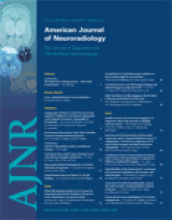Article Figures & Data
Tables
Field Defect or Syndrome Localization Unilateral central scotoma Optic nerve Bitemporal hemianopsia Chiasm Junctional defect (ipsilateral central scotoma and a contralateral superior temporal field cut) Anterior chiasm Central temporal scotomas Posterior chiasm Incongruous homonymous hemianopsia, afferent pupillary defect, and bow-tie atrophy Optic tract Homonymous sectoranopia Lateral geniculate nucleus Incongruous homonymous hemianopsia Lateral geniculate nucleus Homonymous upper quadrant defect “pie in the sky” Temporal lobe Homonymous defect, denser inferiorly Parietal lobe Gerstmann syndrome and a homonymous defect, denser inferiorly Parietal lobe Complete homonymous hemianopsia Not well-localized Homonymous upper quadrantanopsia with macular sparing Occipital lobe (lower bank) Homonymous lower quadrantanopsia with macular sparing Occipital lobe (upper bank) Isolated homonymous defect (macular sparing) without other neurologic findings Occipital lobe Anton syndrome (cortical blindness) Bilateral occipital lobe lesions Balint syndrome Bilateral occipitoparietal lesions Alexia without agraphia Left occipital lobe and angular gyrus Central achromatopsia Bilateral occipito-temporal lesions Associated Symptoms Consideration Isolated, painful Carotid dissection, cluster headache Sensory level Spinal cord Arm numbness or weakness Brachial plexus Ipsilateral face and contralateral body numbness Medulla Sixth-nerve palsy Cavernous sinus Motility Disturbance Localization/Etiology Weber syndrome (Third-nerve palsy and hemiparesis) Anterior midbrain Benedikt syndrome (third-nerve palsy and contralateral tremor) Red nucleus and third-nerve fascicle Isolated pupil-involving third-nerve palsy Posterior communicating artery aneurysm Pupil-sparing third-nerve palsy Microvascular ischemia of the third nerve Isolated fourth-nerve palsy Doral midbrain/anterior medullary velum Microvascular ischemia Isolated sixth nerve palsy Pons or sixth-nerve fascicle Demyelination/microvascular ischemia Gaze palsy and facial weakness Dorsal pons/facial colliculus Bilateral sixth-nerve palsies Elevated intracranial pressure Third-, fourth-, and sixth-nerve palsies Cavernous sinus Third-, fourth-, sixth-nerve palsies, and optic neuropathy Orbital apex Multiple cranial neuropathies Subarachnoid space Internuclear ophthalmoplegia Medial longitudinal fasciculus Gaze palsy Dorsal pons Parinaud syndrome (upgaze palsy, eyelid retraction) Dorsal midbrain Nystagmus Location Spasmus nutans Congenital or chiasm Seesaw Midbrain/parasellar region Downbeat Cervicomedullary junction Periodic alternating Cervicomedullary junction Dissociated Medial longitudinal fasciculus Rebound Cerebellum Convergence retraction nystagmus Dorsal midbrain Oculopalatal myoclonus Mollaret triangle (central tegmental tract) Brun nystagmus Cerebellopontine angle Gaze evoked Vestibular, cerebellum Upbeat Pontomesencephalic or pontomedullary junction and cerebellum Torsional (pure) Central vestibular or cerebellum












